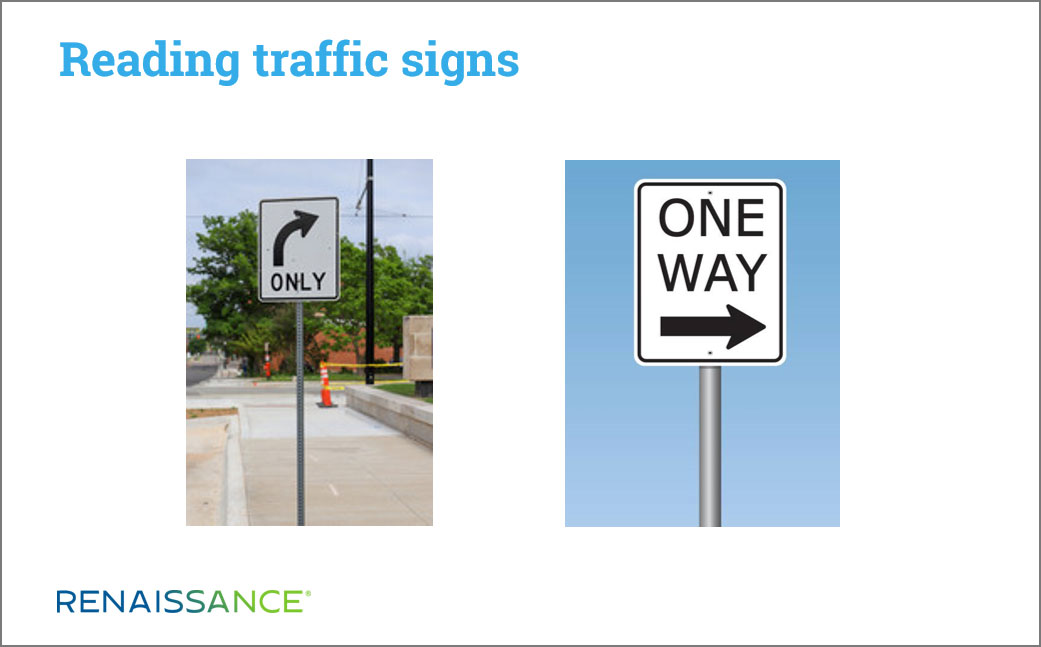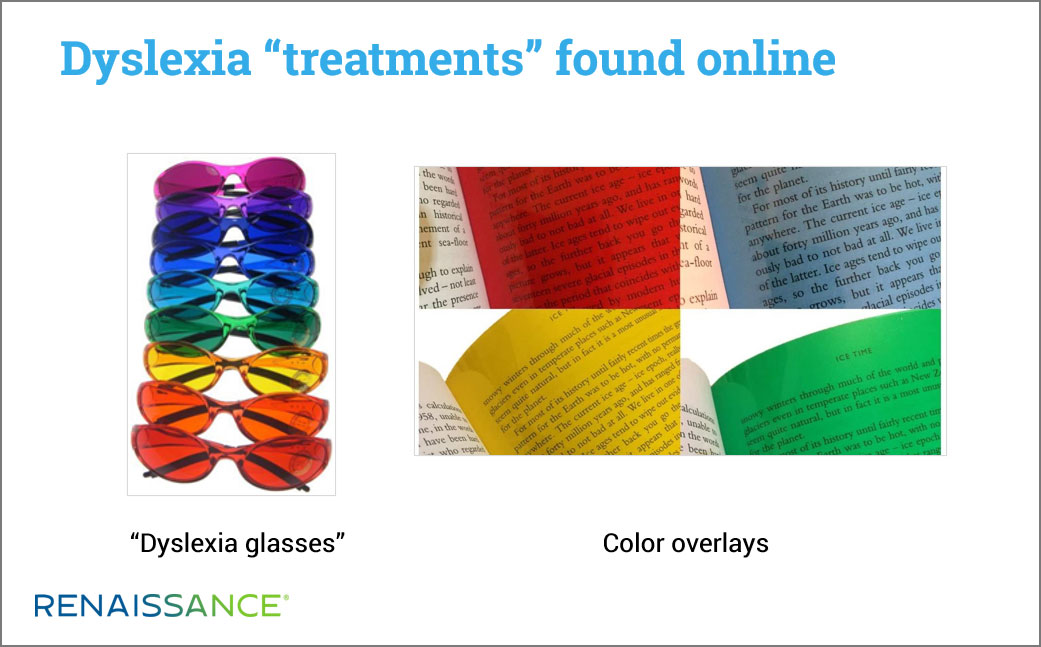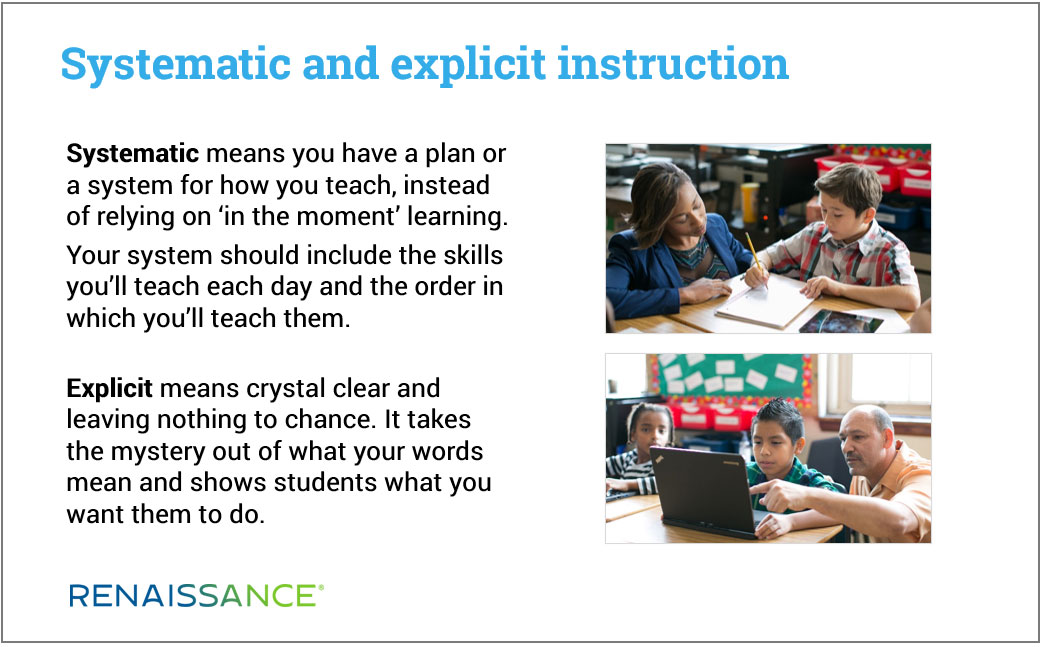September 30, 2022
As the creator of Renaissance’s new Star Phonics assessment, I often receive questions from educators and families about how to best support students with dyslexia—and about whether these students can learn to read successfully. The good news is that students with dyslexia can become confident, independent readers, although their journey to literacy may look somewhat different than it does for their peers. I also encounter many myths and misconceptions about dyslexia. In this blog, I’ll discuss five of the most common, and I’ll explain how these myths can stand in the way of providing students with effective reading instruction and supports.
Note: If you’re not familiar with dyslexia, I encourage you to read the International Dyslexia Association’s official definition.
Myth #1: Dyslexia means “seeing things backwards.”
In my experience, this is the most common myth about dyslexia. In fact, when I type “dyslexia and reversals” into Google, I get more than 1.4 million hits. Why do so many people believe this?
The answer is connected to typical reading development and a common error many students make, namely: reversing letters when reading or writing, like “b” and “d” or “p” and “q.” This type of error is common when students are learning how phonemes (sounds) and graphemes (letters) are connected in English. The fact that we have 26 letters in our alphabet and around 44 sounds can make it challenging to keep the letters and sounds straight. It also means that letters that look similar will often be confused until the student has mastered this skill.
It’s true that students with dyslexia are more susceptible to making these types of errors, because a common characteristic of dyslexia is struggling with accurately mapping the correct phonemes to graphemes. That is why it’s not uncommon for these students to continue to make these types of reversals when their peers are not. It does not mean they “see things backwards,” however. Instead, it means they need more help learning how letters and sounds go together.
I can’t help but make one more comment here. If it were true that students with dyslexia see letters and words backwards, wouldn’t this be true for everything they see? Wouldn’t pictures, signs, clothing, food, and everything else be backwards? For example, if they saw traffic signs like the ones below, wouldn’t both the letters/words and the arrows be reversed?

Clearly, this doesn’t happen. The human brain does know to only pinpoint and reverse letters and words, which shows how baseless this myth is.
Myth #2: Dyslexia is a visual impairment.
Like myth #1, there’s no evidence that students with dyslexia have visual impairments that relate to their reading challenges. But I have two theories as to why this myth is so common.
First, it builds on myth #1 that students see things backwards; therefore—dyslexia must have something to do with their vision. If you believe myth #1, then it’s not a stretch to believe that dyslexia results from a visual impairment.
Second, there are many so-called “treatments” for dyslexia that focus on students’ vision. These include color overlays, special glasses, special fonts, and even eye tracking exercises. Because these treatments exist, people conclude that dyslexia must result from a visual impairment.
Unfortunately, we don’t have an FDA to regulate educational treatments, so it can be a case of “anything goes”—even if the treatments don’t actually work. One example relates to Scotopic Sensitivity Syndrome, also called Irlen Syndrome for its developer, Helen Irlen. Irlen’s institute claims that this syndrome is a visual processing disorder that can’t be detected by any test other than theirs. The treatment is a color overlay placed on top of text. There are no independent empirical studies to support the existence of this syndrome or the efficacy of the treatment, yet it plays into the notion that vision is involved. This gives people hope that there is a “quick fix” or cure for dyslexia, which leads us to the next myth.

Myth #3: Dyslexia can be cured.
People with dyslexia wish this were true, but they know only too well that dyslexia is a lifelong disability, and there is no cure. However, people with dyslexia can become strong readers, and there are many scientifically based interventions to support K–12 students’ skills in reading. Instead of sharing a list, I’ll describe what makes an intervention effective by discussing the skills it should include and what the instruction should look like. If you keep these points in mind, you won’t have a problem distinguishing effective from ineffective interventions.
Let’s start with the skills students with dyslexia—and, frankly, any student learning to read—will benefit from:
- Phonemic awareness: E.g., ask students to tell you all of the sounds they hear in the word “sat”. Without looking at any letters, they should say “/s/ /a/ /t/.” This helps them to focus on the phonemes (sounds) that make up words.
- Phonics/decoding: E.g., ask students to say the sounds in “sat” and to then read the word. Students should look at each letter and say “/s/ /a/ /t/,” and they should then say “/sat/”. This is an extension of phonemic awareness by adding the letters that represent the sounds.
- Fluency: E.g., ask students to read aloud without making errors, at a pace that is fitting for the text (poems might be slower, novels might be faster), while also using expression to convey meaning.
- Vocabulary: E.g., ask students to tell you what the word “sat” means. Vocabulary develops over time and should be taught explicitly, even if students aren’t yet reading. This is because they need to know the meaning of the words they’ll encounter in order to comprehend what they read.
Now, let’s discuss how these skills should be taught. This is often referred to as systematic and explicit instruction, or evidence-based instruction. Let’s consider these terms in detail.
Systematic means you have a plan or a system for how you teach, instead of relying on discovery or “in the moment” learning. Your system should include the skills you’ll teach each day and the order in which you’ll teach them. This is often referred to as your scope and sequence. Things to consider when developing a scope and sequence include:
- The prerequisite skills students need in order to learn a new skill. For example, teaching the sounds of the letters before teaching students how to read words is logical, because their ability to read a word will depend on how well they know their letter sounds.
- Plans for how much time you’ll need to teach a skill, based on whether you’re teaching it for the first time, providing practice, or reviewing it. Logically, your plan should allow for more time when teaching a skill for the first time versus reviewing a skill.
Explicit: Think of this as crystal clear, black and white, and leaving nothing to chance. You may have heard explicit instruction referred to as “I do, we do, you do.” To show you what this looks like, I’ll provide an example.
“I do” means the teacher shows, demonstrates, and produces the exact response she wants the students to carry out. The goal is to leave nothing to chance. For teaching letter sounds, this would look like the following:
Teacher: Points to the letter S on the board. “Today we’re going to learn the sound for the letter S. The letter S says: ‘sssssssss.’ Listen: ‘sssssssss.’ Now it’s your turn. When I point to the letter, you say the sound.” Points to the letter S.
Students: “ssssssssss.”
“We do” means the teacher continues the lesson but asks the students to respond with her. For example:
Teacher: “Now let’s do it together. When I point to the letter S, you say the sound with me.” Points to the letter S.
Teacher and students: “sssssssss.”
“You do” means the students produce the sound by themselves. For example:
Teacher: “Now it’s your turn! When I point to the letter S, you say the sound by yourselves.” Points to the letter S.
Students: “sssssssss.”
Now, let’s consider what this might look like using a non-explicit—or discovery learning—approach. Imagine a teacher is reading a book about the sun aloud to her class. She interrupts her reading to ask a question:
Teacher: “Who saw the sun today on their way to school?”
Students: Raise their hands.
Teacher: “Does anyone know what letter ‘sun’ begins with?”
Students: Raise their hands.
Teacher: Picks one student and asks, “What sound does ‘sun’ begin with?”
Student: “ssssssss.”
Teacher: Addressing that student only: “Good job!” Continues reading the book aloud.
Both teachers planned to teach the letter S as part of their lesson. The first teacher, using “I do, we do, you do,” makes sure the students look at the letter and hear the correct pronunciation before they all practice producing the sound. The second teacher chooses to teach “in the moment” using a book, meaning the students may or may not have seen the letter S, and not all students are expected to produce the sound.
Now think about our students with dyslexia—or any student learning to read. Which classroom would you want them to be in?

Myth #4: Students with dyslexia are “lazy.” They just need to make more of an effort.
This myth really frustrates me because it blames students for something they can’t control. But I think I can shed light on why this myth is prevalent. It’s because students with dyslexia are, in many ways, just like any other students when it comes to learning other subjects, social skills, and oral language. When you talk to students with dyslexia, you’ll find that they’re like most typically developing students, they have a wide vocabulary, and they’re knowledgeable and articulate.
This means that when it comes to dyslexia, you can’t “see it”—and if you can’t see a person’s disability, it can be harder to understand that they have one. This leads to the misconception that this seemingly capable, articulate student who does well in other subjects should also be doing well in reading. They just need to try harder! For students with dyslexia, nothing stings more than people attributing their struggle to a choice they’re making—as if they’d be able to read successfully if they put in more effort.
Myth #5: Dyslexia is a medical diagnosis.
Have you heard that only doctors can diagnose dyslexia? As a former school psychologist, I can assure you this is not the case. So, how is dyslexia diagnosed? In the US, public schools—as well as private schools receiving federal funds—are required to have a team that includes a school psychologist, speech-language pathologist, special and general education teachers, and others, depending on the circumstances. If there’s reason to suspect a student has any type of disability, including dyslexia, this team is responsible for collecting data using assessments, interviews, and observations to determine whether the student has a disability and, if so, whether the student requires special education services.
Note that dyslexia falls under the definition of “specific learning disability” and is not a separate disability category under the Individuals with Disabilities Education Act (IDEA). The USDOE’s Office of Special Education Programs (OSEP) issued a “Dear Colleague” letter in 2015 confirming that schools can use the term “dyslexia” when considering whether a student is eligible for special education due to a specific learning disability in reading.
How Renaissance supports universal screening for characteristics of dyslexia
Now that we’ve examined some common myths, let’s turn our attention to dyslexia screening, which nearly every state requires for all K–3 students. As a result of these policies, we can now identify children with dyslexia as early as kindergarten. The purpose of identifying these children is, of course, to intervene—and we know that the earlier this happens, the greater the chances that students will receive instruction and supports to become successful readers.
Skills included in dyslexia screening are phonemic awareness, phonics, rapid automatized naming (RAN), word reading fluency, and spelling. Renaissance offers several assessment options for universal screening in these areas. Star Early Literacy, Star Reading, and Star CBM Reading appear on many states’ lists of approved dyslexia screeners. Star CBM Reading includes several RAN measures, including new measures this school year for Rapid Letter Naming and Rapid Number Naming.
The assessment I created, Star Phonics, is an important companion to a school’s reading screener. Star Phonics is the only assessment that measures 12 of the most common phonics patterns and also provides diagnostic information on 102 specific phonics skills. Because phonics is complex, administering a phonics screener to all students provides detailed information for instructional planning on the skills that are most predictive of learning to read successfully. For students with dyslexia, measuring their phonics skills is one of the best ways we can help them by identifying what they already know and where we need to focus instruction. The faster we can help these students, the greater the success they’ll have in reading, and they deserve to have the best support we can provide.
Learn more
For more information about dyslexia, including fact sheets, family resources, and responses to frequently asked questions, visit the International Dyslexia Association’s website. To learn more about Renaissance Star Assessments for screening and progress monitoring, click the button below.

